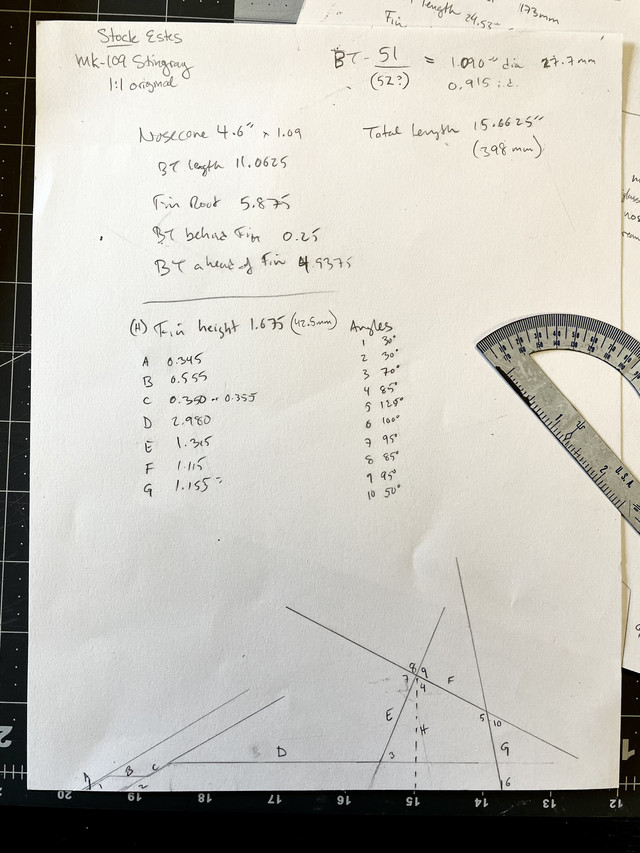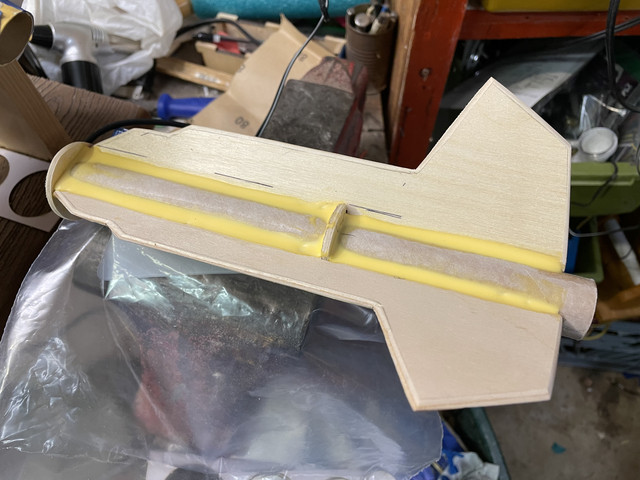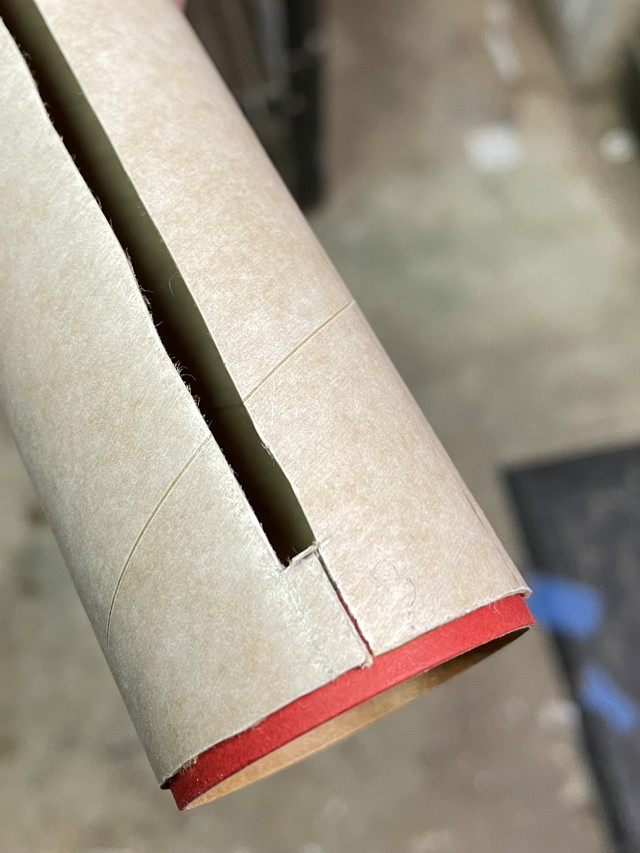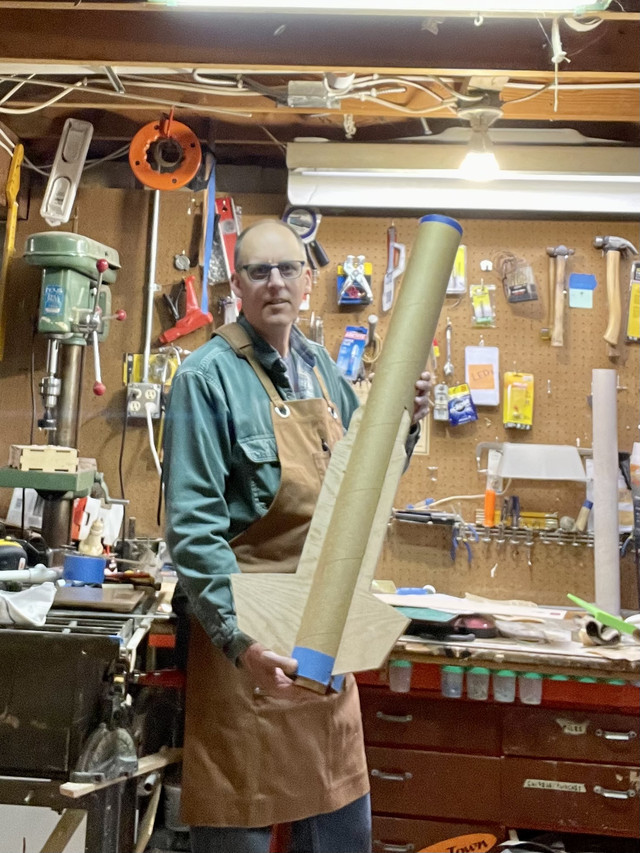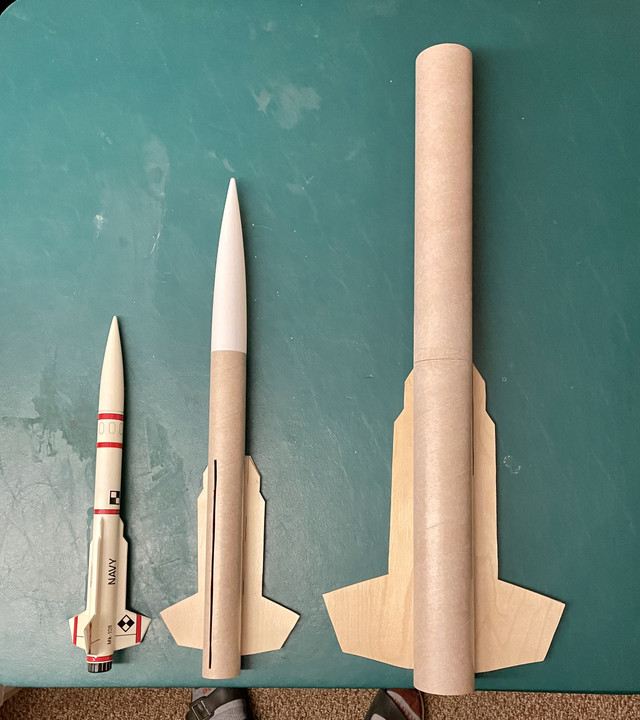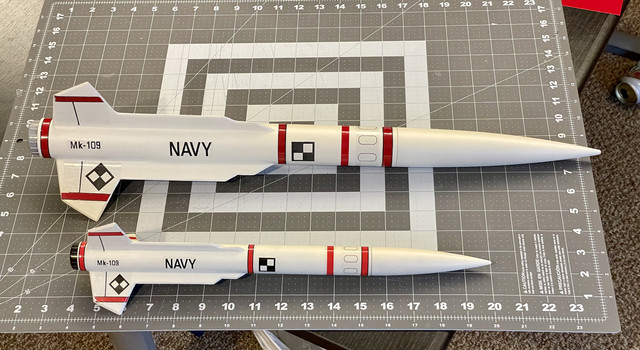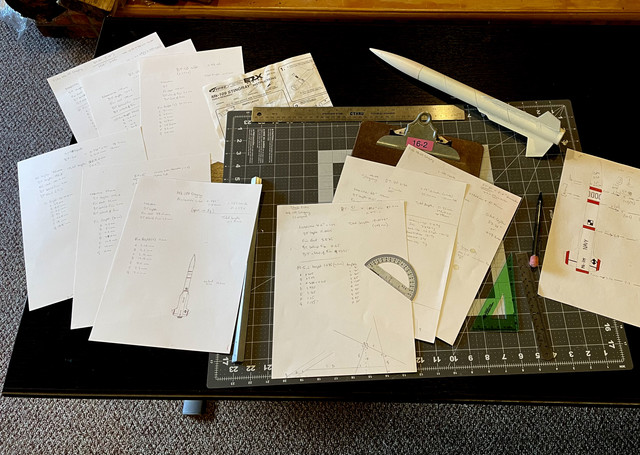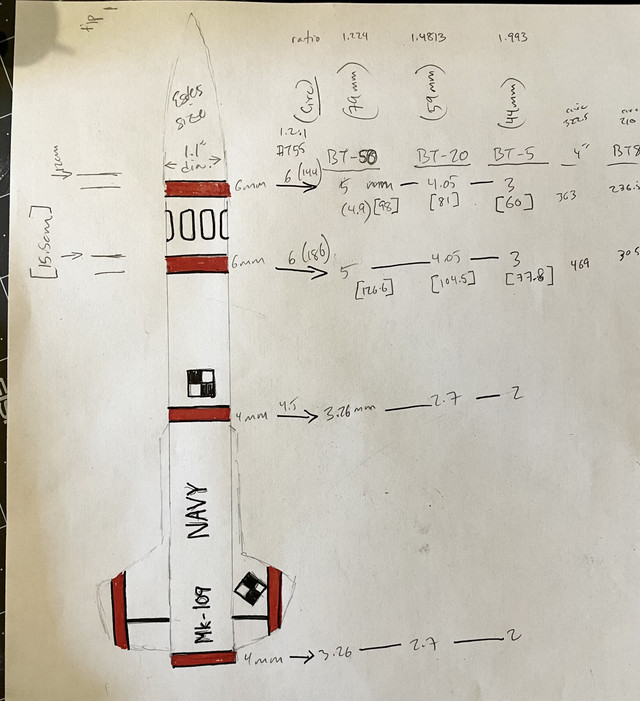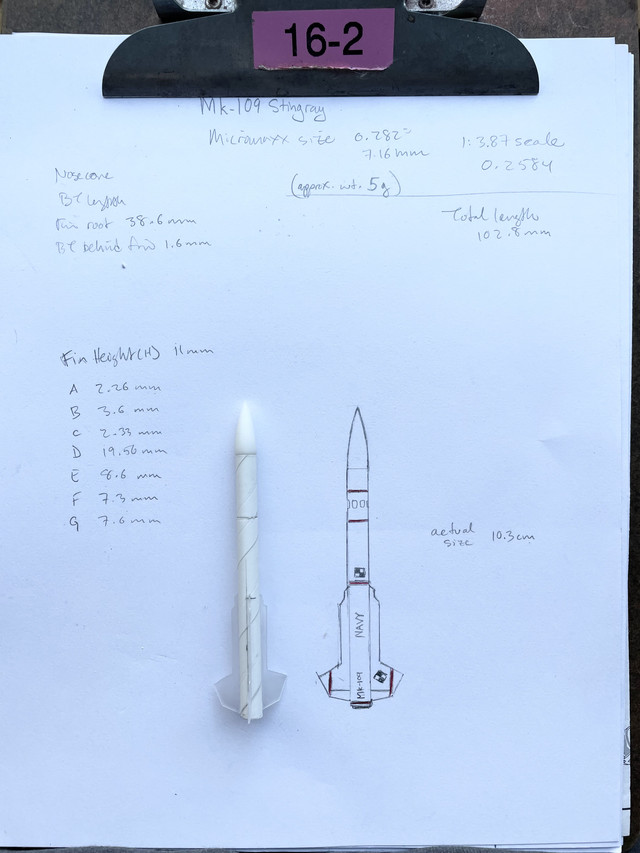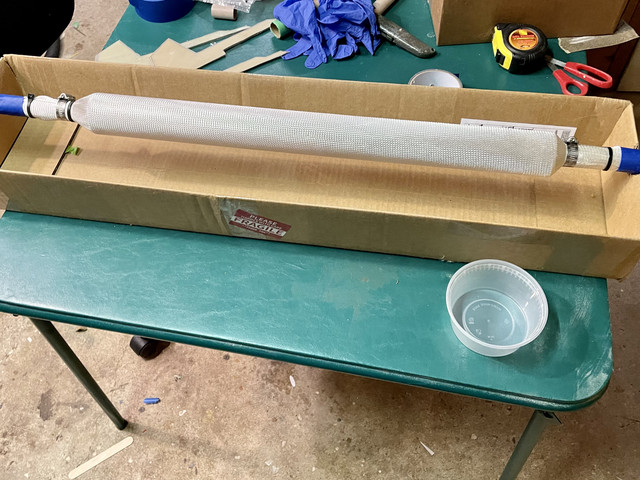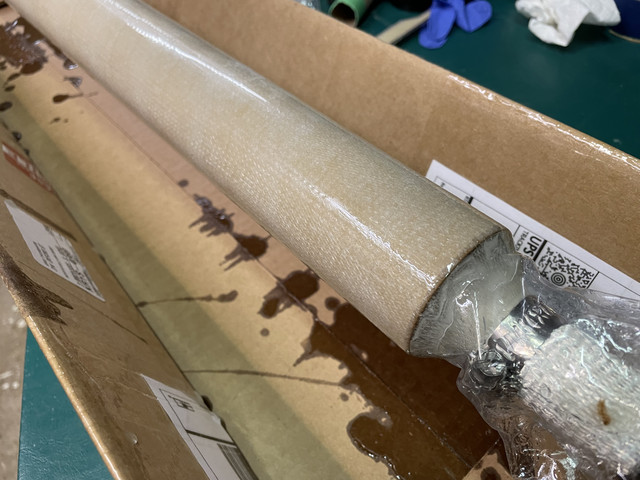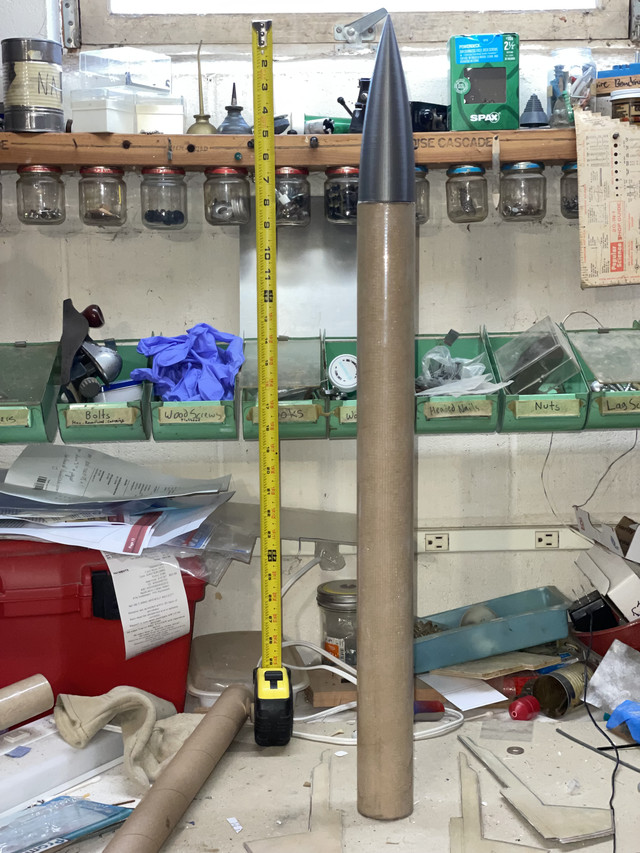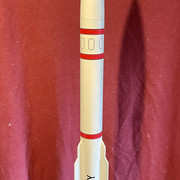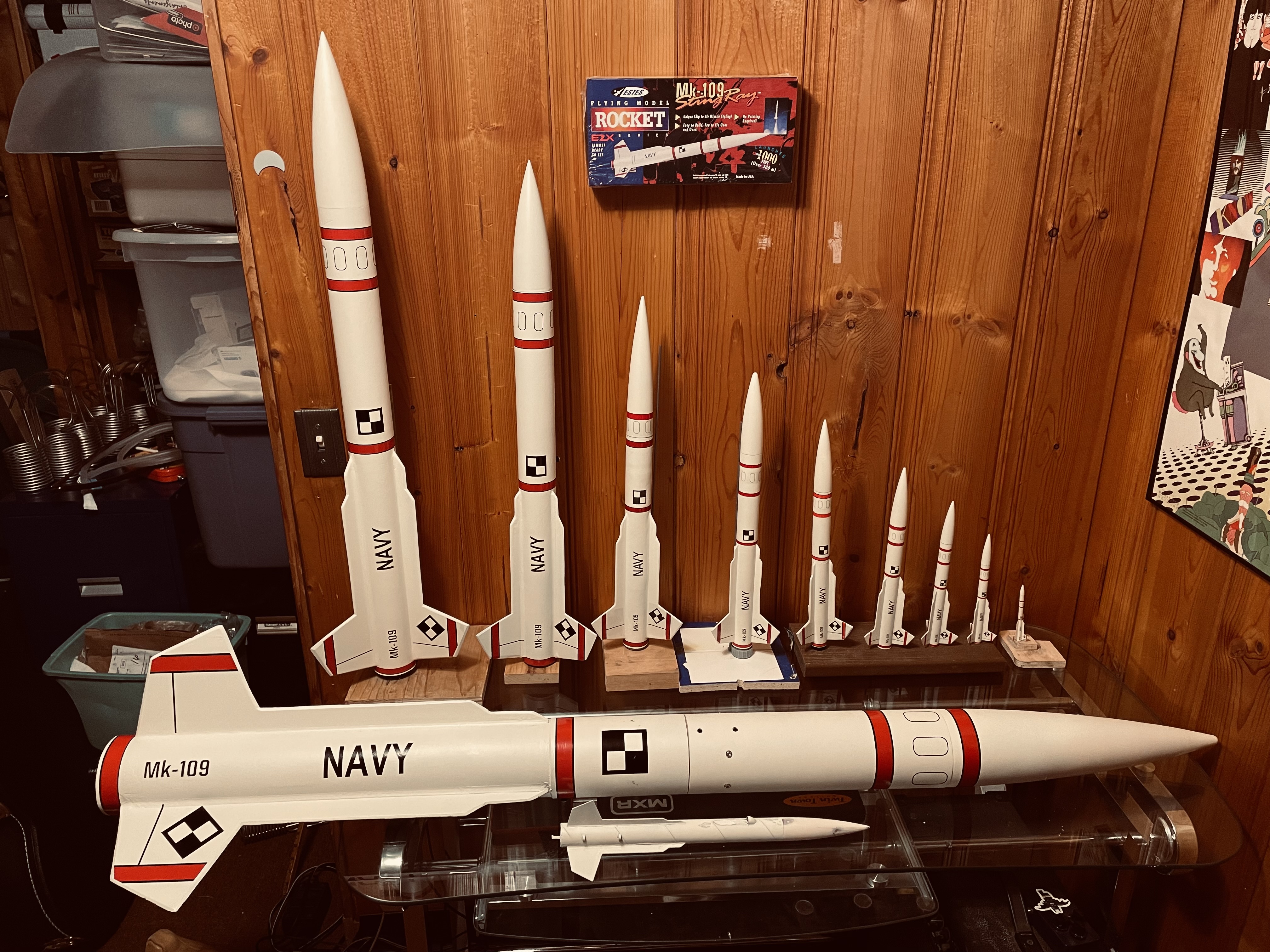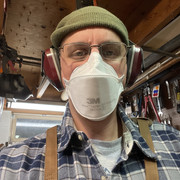Kframe
Well-Known Member
This is going to be a retrospective build thread. I will add to it in chunks so I don't lose what I've written along the way. Also, as this occurred over months I may not have the exact order of each step recounted correctly, but you’ll get the idea.
***
Last summer a friend of mine that works in estate sales pulled an Estes Range Box out of a dumpster at sale he worked and gave it to me.
Among other bits and pieces was an assembled but damaged Estes Stingray Mk-109 (#2131) and the instructions and the intact decal (sticker) sheet. Almost immediately I kind of fell in love with the lines of this rocket, still just 3FNC but the fins were long and sleek and just looked awesome to me. The damage was just a plastic fin that had popped off, but before I glued it back on I traced it on paper as I already had thoughts of making a high quality clone of this E2X rocket (the 'wart' on the side for the shock cord just bugged me).
Within about a day I had mostly built the clone. You can also see I filled in the slots for the E2X fins and the lug ‘wart’ hole.

After paint and using the stickers from the dumpster, I had a really great looking version with wood fins and no lug wart.
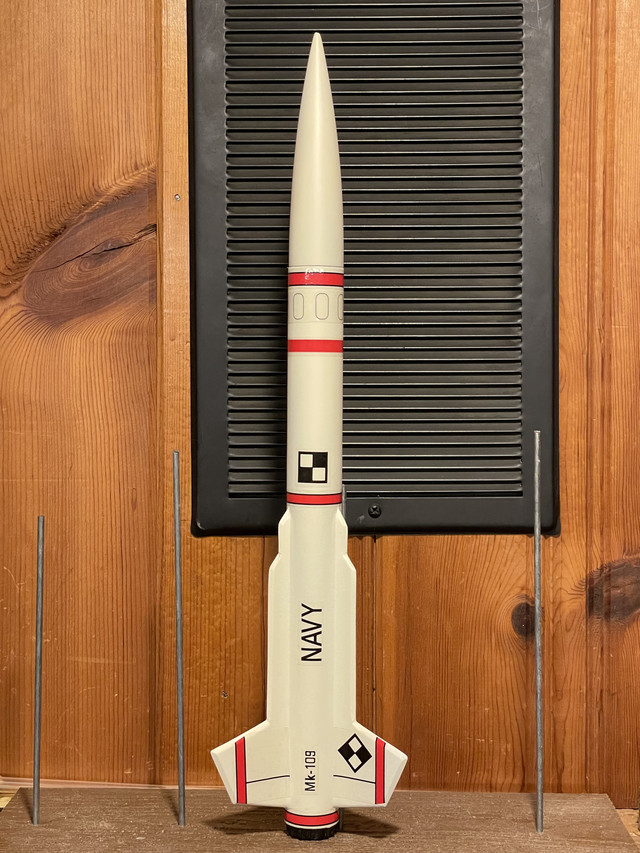
What I didn't know yet was how far I would take this...
***
Last summer a friend of mine that works in estate sales pulled an Estes Range Box out of a dumpster at sale he worked and gave it to me.
Among other bits and pieces was an assembled but damaged Estes Stingray Mk-109 (#2131) and the instructions and the intact decal (sticker) sheet. Almost immediately I kind of fell in love with the lines of this rocket, still just 3FNC but the fins were long and sleek and just looked awesome to me. The damage was just a plastic fin that had popped off, but before I glued it back on I traced it on paper as I already had thoughts of making a high quality clone of this E2X rocket (the 'wart' on the side for the shock cord just bugged me).
Within about a day I had mostly built the clone. You can also see I filled in the slots for the E2X fins and the lug ‘wart’ hole.

After paint and using the stickers from the dumpster, I had a really great looking version with wood fins and no lug wart.

What I didn't know yet was how far I would take this...
Last edited:





